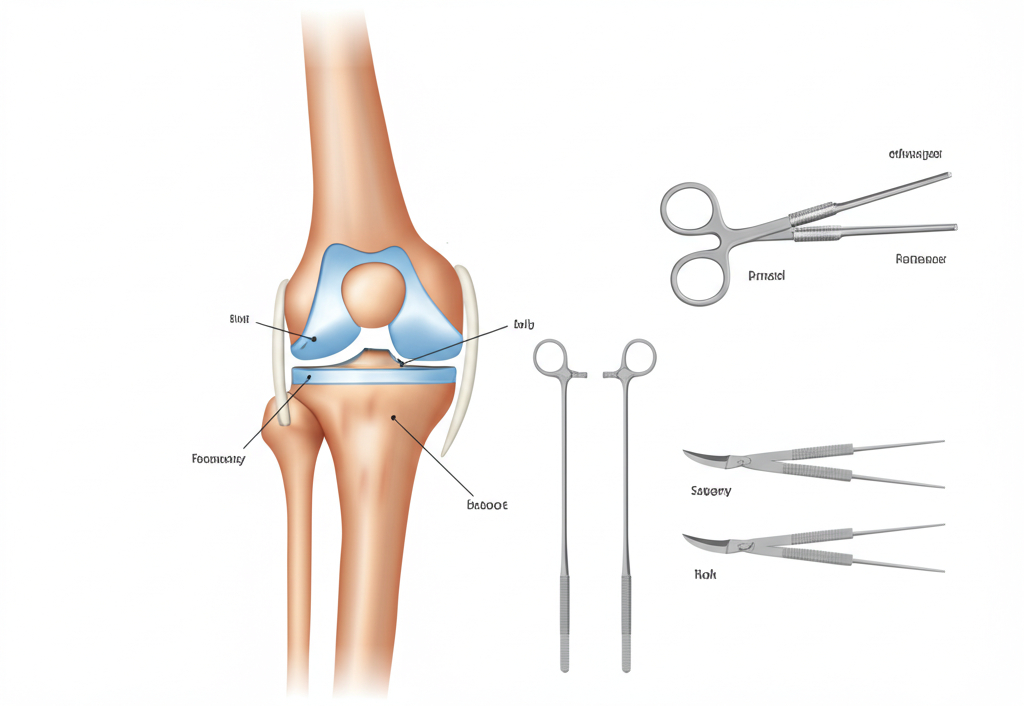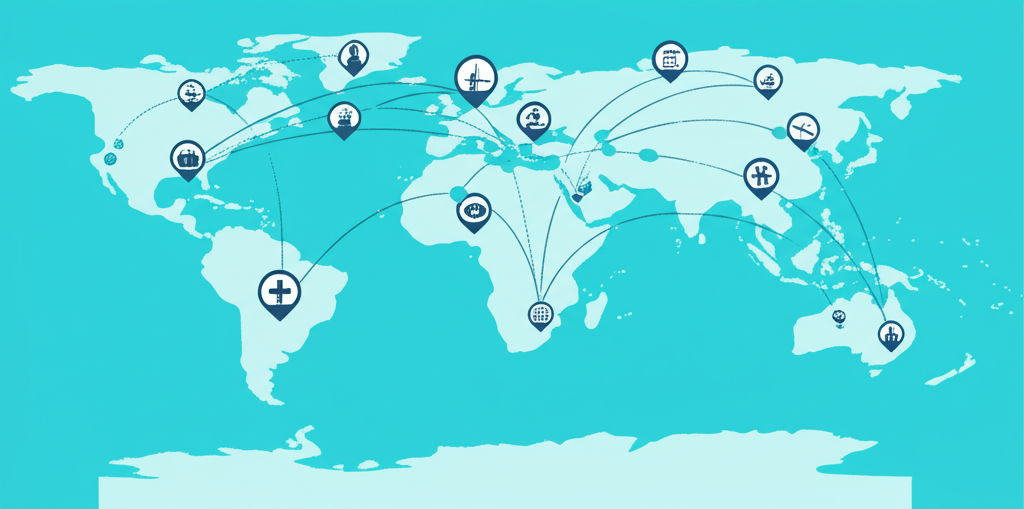How I Saved $45,000 on My Knee Replacement

After years of enduring knee pain and facing a $58,000 quote for knee replacement surgery in Chicago, I discovered an option that saved me $45,000 while providing world-class care. Here's my journey to a successful and affordable knee replacement in India.
"The most surprising thing wasn't just the cost savings—it was discovering that the care I received abroad was actually superior to what I would have experienced at home."
My Story Begins: Years of Pain and Limited Options
For nearly a decade, I battled increasing knee pain from osteoarthritis. As a 62-year-old former college basketball player who stayed active throughout life, my knees had taken their fair share of punishment. Conservative treatments like physical therapy, cortisone injections, and hyaluronic acid helped temporarily, but my orthopedist eventually delivered the inevitable news: I needed a total knee replacement.
As a small business owner with high-deductible insurance, I was shocked when I received the estimate: $58,000 for the surgery, hospital stay, and immediate rehabilitation. Even with insurance, my out-of-pocket expenses would exceed $14,000. This financial burden, coupled with the projected 3-month business disruption during recovery, seemed overwhelming.
Considering Alternatives: The Research Phase
My journey toward medical tourism began by accident. During a neighborhood barbecue, I mentioned my knee predicament to a friend whose wife had recently traveled to Mexico for dental work. He suggested I look into international options for my knee replacement. Initially skeptical, I began researching medical tourism out of curiosity.
After weeks of intensive research, I narrowed my focus to three countries renowned for orthopedic care: India, Thailand, and Singapore. Each offered Joint Commission International (JCI) accredited hospitals with U.S.-trained surgeons at a fraction of U.S. costs. After comparing patient testimonials, surgeon credentials, hospital facilities, and total costs including travel, I decided to pursue treatment in India.
$58,000
U.S. Quote
$13,000
Total Cost in India
(including travel)
$45,000
Total Savings
Finding the Right Facilitator: care.quest Made It Simple
A turning point came when I discovered care.quest, a medical tourism facilitator specializing in orthopedic procedures abroad. Their team connected me with Apollo Hospital in Chennai, India—a state-of-the-art facility that performs over 1,500 joint replacements annually. My assigned surgeon, Dr. Rajesh Verma, completed his fellowship training at the Hospital for Special Surgery in New York, one of America's top orthopedic institutions.
care.quest coordinated everything: sending my medical records and imaging to Dr. Verma, arranging a video consultation, providing detailed cost breakdowns, and answering my endless questions about logistics, quality of care, and safety. They even connected me with three former patients who had undergone the same procedure at Apollo Hospital.
Making the Decision: Overcoming Doubts
Despite the thorough preparation, I still had reservations. My local orthopedist warned about potential complications and the difficulty of follow-up care. Friends raised concerns about medical standards and infection rates in "foreign hospitals." My wife worried about traveling so far while dealing with surgery.
To address these concerns, I:
- Researched infection rates (Apollo's were actually lower than most U.S. hospitals)
- Verified Dr. Verma's credentials and reviewed his publication history
- Confirmed the hospital used the exact same Smith & Nephew Genesis II knee prosthesis my U.S. doctor recommended
- Arranged for post-surgery follow-up with my local orthopedist
- Purchased comprehensive travel insurance with medical evacuation coverage
After weighing all factors, I made my decision. The potential $45,000 savings and the impressive credentials of both the hospital and surgeon convinced me it was worth pursuing.
The Journey Begins: Traveling to India
In November 2023, my wife and I boarded a flight to Chennai, India. care.quest had arranged a business class ticket for me (to provide extra legroom and comfort) and economy for my wife. Upon arrival, we were greeted by a hospital representative who escorted us to a pre-arranged hotel near the hospital—a comfortable 4-star accommodation included in our package.
The next day, I underwent pre-surgical evaluations at Apollo Hospital. I was immediately struck by the facility's modernity—it rivaled or exceeded many U.S. hospitals I'd visited. The equipment was cutting-edge, the facility spotlessly clean, and all staff members spoke excellent English. Dr. Verma spent nearly an hour reviewing my case, explaining the procedure, and answering questions—far more time than any U.S. specialist had ever given me.
Surgery Day: World-Class Care
Two days after arrival, I underwent surgery. The pre-operative process was thorough and reassuring. Dr. Verma used a minimally invasive technique with computer-assisted navigation for precise implant placement. The procedure lasted approximately 90 minutes, and I woke up in a private recovery room with my wife nearby.
What surprised me most was the level of personal attention. My room featured a call button, but I rarely needed it as a nurse checked on me every 30 minutes. A physical therapist visited twice daily, beginning gentle exercises the day after surgery. The surgeon himself visited every morning and evening—a level of attention I never expected.
The food was another pleasant surprise. The hospital offered both Western and Indian options, all nutritionally optimized for recovery. When I mentioned enjoying a particular South Indian dish, the hospital chef prepared a modified version suitable for my dietary needs.
My Recovery Timeline
- 1
Day 1-2:
Initial walking with walker, pain management, compression therapy
- 2
Day 3-5:
Increased walking distance, stair practice, reduced pain medication
- 3
Day 6-7:
Walking with cane, increased range of motion exercises, discharge planning
- 4
Day 8-14:
Continued physical therapy at hotel, local sightseeing, preparation for travel
Recovery and Tourism: The Best of Both Worlds
I spent five days in the hospital before transferring to the hotel for continued recovery. The package included daily visits from a physical therapist for the next week. By day 10, I was walking confidently with a cane and had nearly 90-degree knee flexion—on target with recovery milestones.
As my mobility improved, we enjoyed the cultural aspects of our trip. The hospital's patient services coordinator arranged short excursions to nearby temples and markets. My wife particularly enjoyed a half-day cooking class learning South Indian cuisine. These experiences transformed what could have been merely a medical journey into a meaningful cultural exchange.
Two weeks after surgery, Dr. Verma cleared me for travel with specific instructions for continued rehabilitation. The hospital provided a comprehensive discharge report, medication list, and digital copies of all imaging for my local physician.
Returning Home: Continued Success
The long flight home was manageable with frequent aisle walks and compression stockings. Upon return, my local orthopedist was admittedly surprised by my progress and the quality of the procedure. My physical therapist remarked that my recovery was ahead of schedule compared to her other knee replacement patients.
Today, four months post-surgery, I have full knee extension and 120-degree flexion—better than many local patients achieve. I've returned to swimming, cycling, and even light hiking. My business was minimally impacted as I managed remote work during recovery.
The Financial Reality
The total cost breakdown was eye-opening:
- Hospital and surgery fees: $8,200 (including surgeon, anesthesia, implant, hospital stay)
- Airfare: $2,900 (business class for me, economy for my wife)
- Hotel (20 nights total): $1,500
- Meals and local expenses: $400
- Total cost: $13,000
Compared to my anticipated out-of-pocket expense of $14,000 in the U.S. (after insurance), I not only saved money but also gained a remarkable travel experience with my wife. When comparing the full procedural cost ($58,000 vs. $13,000), the savings are staggering—$45,000.
Lessons Learned: Advice for Others
For anyone considering medical tourism, I offer these insights:
- Research thoroughly: Investigate accreditation, surgeon credentials, and patient outcomes
- Use a reputable facilitator: care.quest simplified every aspect of my journey
- Plan for adequate time: Don't rush recovery or try to compress the timeline
- Bring a companion: Having my wife's support was invaluable
- Maintain an open mind: Cultural differences in healthcare can actually enhance your experience
- Coordinate with your local doctor: Ensure smooth transition of care upon return
- Document everything: Keep detailed records of all medical reports and communications
Final Thoughts: Would I Do It Again?
Without hesitation, yes. The quality of care exceeded my expectations in every way. The surgeons, facilities, nursing care, and rehabilitation were world-class. The cultural experience added depth to what could have been merely a medical procedure.
Medical tourism isn't just about cost savings—though that benefit is substantial. It's about accessing excellent care without financial devastation, experiencing a new culture, and expanding your perspective on global healthcare. My knee replacement in India wasn't a compromise—it was an upgrade in care, experience, and outcome.
If you're facing a similar situation with prohibitive medical costs, I encourage you to explore international options through a reputable facilitator like care.quest. It might just change your life as it did mine—both physically and financially.
Share this article:
